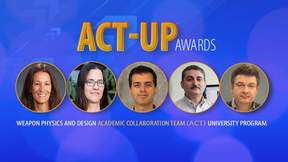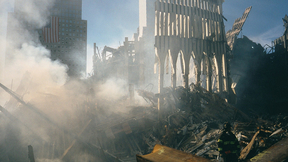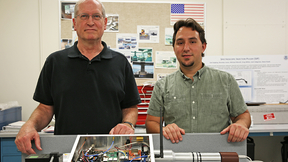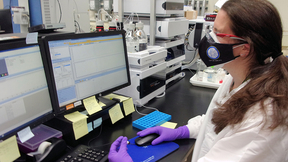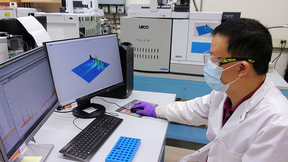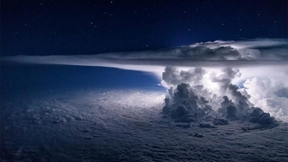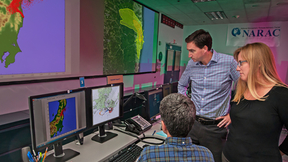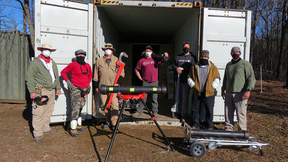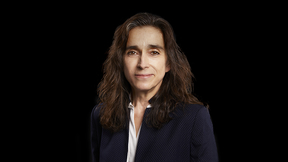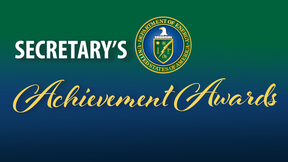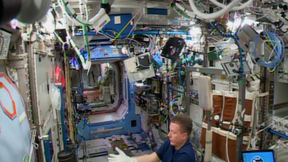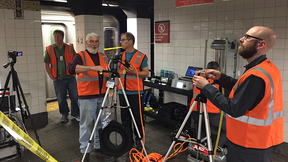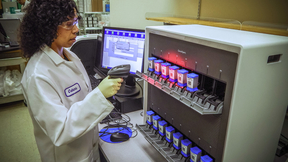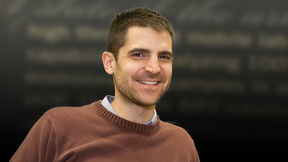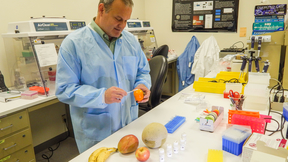Back
Biosecurity
LLNL and BridgeBio announce trials for supercomputing-discovered cancer drug
In a substantial milestone for supercomputing-aided drug design, Lawrence Livermore National Laboratory (LLNL) and BridgeBio Oncology Therapeutics (BridgeBio) today announced clinical trials have begun for a first-in-class medication that targets specific genetic mutations implicated in many types of cancer. The development of the new drug — BBO-8520 — is the result of…
GUIDE team develops approach to redesign antibodies against viral pandemics
In a groundbreaking development for addressing future viral pandemics, a multi-institutional team involving Lawrence Livermore National Laboratory (LLNL) researchers has successfully combined an artificial intelligence (AI)-backed platform with supercomputing to redesign and restore the effectiveness of antibodies whose ability to fight viruses has been compromised by…
The people of stockpile stewardship are the key to LLNL’s success
The last nuclear test, code-named Divider, took place 30 years ago, on Sept. 23, 1992. That year, President Bush declared a temporary moratorium on nuclear testing, which became permanent during the Clinton administration. This ending of the era of nuclear testing was also the beginning of stockpile stewardship. Leaders from the Department of Energy (DOE), and Lawrence…
Lab’s ACT-UP awards focus on collaborative university research
With a focus on increasing joint research efforts between Lawrence Livermore National Laboratory and universities, the Lab’s Weapon Physics and Design (WPD) Academic Collaboration Team University Program (ACT-UP) has presented this year’s ACT-UP awards. Now in its third year, the ACT-UP awards were created to encourage and advance strategic partnerships among universities…
Lab’s first responders recall shock, triumph and tragedy in Sept. 11 aftermath
Editor's note: The following is part of a series of articles looking back at the Lab's response immediately following the Sept. 11 attacks and our contributions since that day 20 years ago. Wayne Shotts was asleep when the phone rang on the morning of Sept. 11, 2001. His wife Jacki picked it up. It was their son, Ken. He sounded panicked. “Where’s dad?” Ken asked. Shotts,…
Lab technologies continue to protect the nation against explosives, radiological and nuclear terrorism
Editor's note: The following is part of a series of articles looking back at the Lab's response immediately following the Sept. 11 attacks and our contributions since that day 20 years ago. As part of its mission to make the world a safer place through science and technology, Lawrence Livermore National Laboratory (LLNL) works to help the nation prevent and mitigate…
LLNL earn 'A' grade in OPCW biomedical proficiency test
It wasn’t an easy road, but Lawrence Livermore National Laboratory (LLNL) Forensic Science Center scientists earned an “A” grade in the Organisation for the Prohibition of Chemical Weapons’ (OPCW) recent biomedical proficiency test. In addition to the usual complexity of the sample preparations and analysis, the Livermore scientists received their proficiency test samples…
LLNL's Forensic Science Center earns 'A' grade in OPCW environmental test
This fall, a score of scientists from Lawrence Livermore National Laboratory's (LLNL) Forensic Science Center (FSC) will start two weeks of long days to undertake the Organisation for the Prohibition of Chemical Weapons (OPCW) environmental proficiency test. Livermore scientists have been taking the proficiency tests each October since 2001, with LLNL serving as one of two…
Test News
The uncrewed Dragon spacecraft has separated from the second stage of the Falcon 9 rocket, continuing on its solo journey to the International Space Station to deliver crew supplies, vehicle hardware, and critical materials to support multiple science and research investigations that will take place aboard the orbiting laboratory.
Ten-year anniversary of Fukushima observed
Ten years ago today, on March 11, 2011, a 9.0 Richter-scale earthquake and tsunami in Japan resulted in severe damage to the Fukushima Dai-ichi nuclear power plant and also led to releases of radioactivity into the environment. That same day, the U.S. Department of Energy (DOE) activated Lawrence Livermore National Laboratory’s National Atmospheric Release Advisory Center …
LLNL weapon engineers, biologists deliver critical samples to identify skin proteins left on IEDs
Following a terrorist bombing, can the bomb maker be identified by skin proteins left on the bomb components they handled? To address this question, Lawrence Livermore National Laboratory (LLNL) personnel from Weapons Complex Integration (WCI) and Global Security (GS) Forensic Science and Biosecurity Centers (FSC/BSC) subjected notional bomb components handled by LLNL…
Kim Budil selected as director of Lawrence Livermore
Kim Budil has been named director of Lawrence Livermore National Laboratory (LLNL). Charlene Zettel, chair of Lawrence Livermore National Security, LLC (LLNS), which manages the Laboratory for the Department of Energy's (DOE) National Nuclear Security Administration (NNSA), made the announcement to Laboratory employees Jan. 28. Budil will begin her new role on March 2…
Lab teams earn DOE Secretary Achievement Awards
Lawrence Livermore National Laboratory (LLNL) employees, participating in 10 project teams, recently earned Department of Energy (DOE) Secretary Achievement Awards. Representing some of the highest internal, non-monetary recognition that DOE employees and contractors can receive, these awards recognize DOE employees and contractors for their service and contributions to…
Lab researchers, NASA find space station’s surface microbial profile resembles skin of its crew members
A study conducted by a team of national laboratory and NASA researchers has found that the environment of the International Space Station is affected by the microbial composition of the astronauts themselves. The five-year research effort represents the first study to compare the space station's environmental microbial profile (or microbiome) to an astronaut’s microbiome…
International anthrax conference to explore latest scientific research findings
Scientists and researchers from all over the world who work on Bacillus anthracis, the causative agent of anthrax, and B. cereus and B. thuringiensis, two closely related bacillus species, will be heading to Victoria, British Columbia, in October for the international conference known as "Bacillus ACT." The bi-annual conference, set for Oct. 1-5, will allow members of the…
LLNL supports NYC subway biodefense test
Lawrence Livermore National Lab (LLNL) researchers took to the New York City subway system May 9-13 to help study how a surrogate for a biological agent, such as anthrax, might disperse throughout the nation’s largest rapid transit system as a result of a terrorist attack or an accidental release. As part of a multi-agency test sponsored by the Department of Homeland…
Lawrence Livermore researchers help biomed company land FDA approval for Ebola detection
Researchers from LLNL and three other institutions have assisted a Bay Area biomedical company in advancing its Ebola virus detection test for use.Sunnyvale-based Cepheid has received an emergency use authorization from the U.S. Food and Drug Administration (FDA) to utilize its polymerase chain reaction (PCR)-based assay for diagnostic purposes."We received a Cepheid…
Lawrence Livermore technology could help detect diseases in commercial swine industry
Agricultural officials who seek to detect diseases affecting the commercial swine industry may gain a new ally — a biological detection system developed by Lawrence Livermore National Laboratory (LLNL) researchers.A study by LLNL and Kansas State University scientists found that the Lawrence Livermore Microbial Detection Array (LLMDA) could help identify diseases in the…
Lab's Jeff Drocco named Biosecurity Fellow
A spring workshop in the nation’s capital earlier this month provided an auspicious start for LLNL’s Jeff Drocco and other participants in the Emerging Leaders in Biosecurity Initiative program.Drocco is one of 28 fellows — selected from nearly 100 applicants — participating in the program at the Center for Biosecurity, which is operated by the University of Pittsburgh’s…
Technology quickly traces source of tainted food
LIVERMORE, California – Foodborne illnesses kill roughly 3,000 Americans each year and about 1 in 6 are sickened, according to the Centers for Disease Control and Prevention. Yet most contaminated foods are never traced back to their source. That’s because existing methods to track tainted food following its supply chain from table to farm are highly inefficient,…





